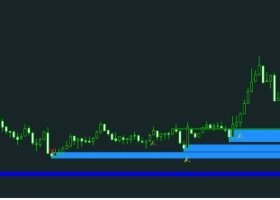A smaller trade deficit and a surge in defense spending
buoyed U.S. economic growth in the third quarter, but other details of
Thursday's report hinted at some loss of momentum in activity.
Gross domestic product grew at a 3.5 percent annual rate, the Commerce Department said on Thursday, beating economists' expectations for a 3.0 percent pace.
While the pace of growth in business investment, housing and consumer spending slowed from the second quarter, all those categories contributed to growth.
Despite decelerating from the fourth quarter's brisk 4.6 percent pace, it was the fourth quarter out of five that the economy has expanded at or above a 3.5 percent clip.
The data came one day after the Federal Reserve ended its asset purchasing program. Fed officials said there was sufficient underlying strength in the broader economy.
The narrower trade deficit reflected a plunge in imports, which fell at their fastest pace since the fourth quarter of 2012. That was largely attributed to a drop in oil imports.
Trade added 1.32 percentage points to growth. Although there are concerns a strengthening dollar and slowing euro zone and Chinese economies will crimp U.S. export growth, economists believe the impact will be marginal.
Government spending was also a boost, with defense spending rising at its fastest pace since the second quarter of 2009.
One of the few areas that was a drag on growth was inventories, which subtracted 0.57 percentage point from GDP after adding 1.42 percentage points in the second quarter.
Growth in business investment slowed in the third quarter, with spending on equipment rising at only a 7.2 percent rate. Economists had expected a second straight quarter of double-digit growth.
Business spending on structures and intellectual products also slowed. Data on Tuesday suggested further moderation in the pace of equipment investment in the fourth quarter, but it is still expected to remain strong enough to keep the economy on a higher growth pace.
While growth in consumer spending decelerated to a 1.8 percent pace from the second-quarter's 2.5 percent pace, it still contributed 1.22 percentage points to GDP growth.
Consumer spending accounts for more than two-thirds of U.S. economic activity.
The moderate pace of consumer spending helped keep inflation pressures under wraps during the quarter, with the two price indexes in the report decelerating sharply.
Declining gasoline prices and accelerating job growth, which is expected to lift wages, will provide tailwinds for consumer spending in the fourth quarter.
Jobless claims inch up
In a separate report, the number of Americans filing new claims for unemployment benefits rose for a second straight week last week, but remained at levels consistent with a firming labor market.
Initial claims for state unemployment benefits increased 3,000 to a seasonally adjusted 287,000 for the week ended Oct. 25, the Labor Department said.
The four-week moving average of claims, considered a better measure of labor market trends as it irons out week-to-week volatility, fell 250 to 281,000. Claims at these levels indicate a strengthening in labor market conditions.
A Labor Department analyst said there were no special factors influencing the state level data.
The Federal Reserve on Wednesday offered a rather upbeat view of the labor market, dropping its characterization of labor market slack as "significant." Fed officials now view the underutilization of labor resources as "gradually diminishing."
The claims report showed the number of people still receiving benefits after an initial week of aid increased 29,000 to 2.38 million in the week ended Oct. 18.
The so-called continuing claims data covered the period for the household survey from which the unemployment rate for October will be calculated.
Continuing claims fell 58,000 between the September and October survey periods, suggesting a decline in the jobless rate. The unemployment rate fell below 6 percent in September for the first time since July 2008.



